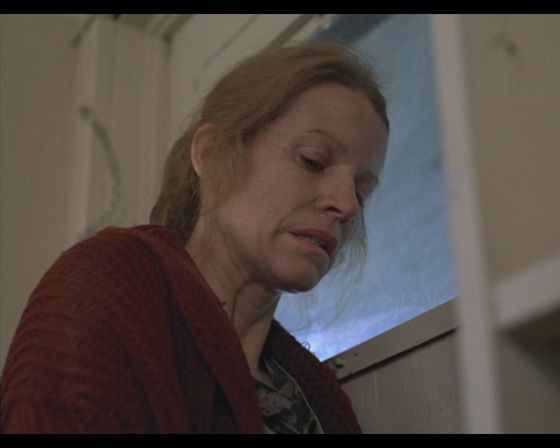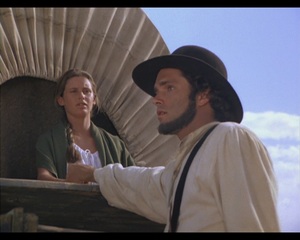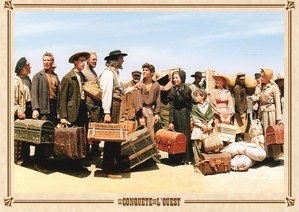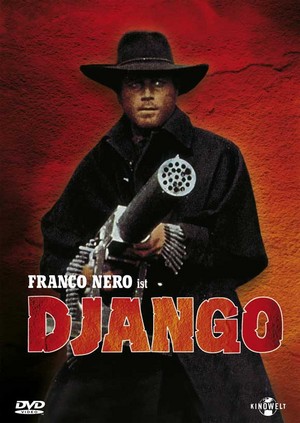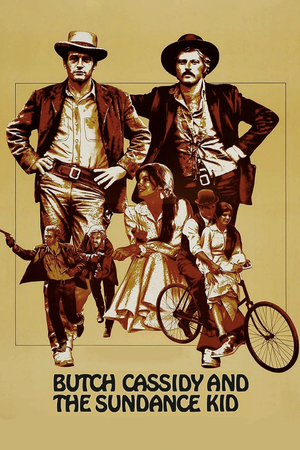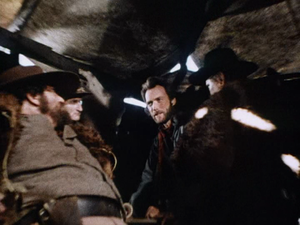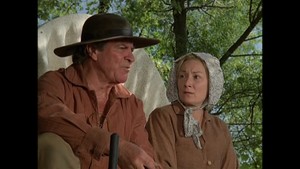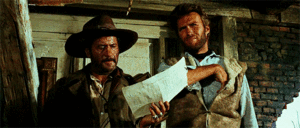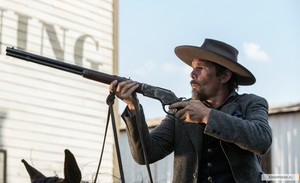"CENTENNIAL" (1978-79) - Episode Eleven "The Winds of Death" Commentary
A recent critic of "CENTENNIAL" once complained that the miniseries had failed to breach the topic of land environmental issues in an effective manner. Author James Michener allowed this subject to dominate his 1973 novel. But this critic seemed to hint that producer John Wilder had 더 많이 또는 less dropped the ball on this topic in the 텔레비전 adaptation.
Looking back at the 이전 ten episodes, I do not know if I agree with that critic. I did notice that the subject of who was qualified to be the true inheritors of the land - at least in regard to Northern Colorado - appeared throughout the miniseries. "CENTENNIAL" also focused on how the story's many characters used the land. One could argue that the subplot regarding the Wendells' origins as stage performers and scam artists had nothing to do with land environmental issues. And I would disagree. The Wendells' murder of the businessman Mr. Sorenson in "The Crime" and Sheriff Axel Dumire's death in "The Winds of Change" allowed the family to become the biggest landowners in Centennial. They used their ill-gotten money - acquired from Mr. Sorenson's 학생 가방, 가방 - to not only acquire land, but also become successful owners of a real estate company. The Wendells' new profession allowed them to play a major role in the major subplot featured in "The Winds of Death".
This eleventh episode began in 1914, with the arrival of Iowa farmers who had recently purchased land from Mervin Wendell. Among the new arrivals is a young couple named Alice and Earl Grebe. These new farmers are warned 의해 Hans Brumbaugh and Jim Lloyd that they would be wise not to farm the land sold to them 의해 the Wendells - namely the neighborhood's drylands near Rattlesnake Buttes. That particular location had already witnessed 이전 tragedies such as Elly Zendt's death, the Skimmerhorn Massacre and the range war that led to 양 herders Nate Pearson and Bufe Coker's deaths. Alice and Earl Grebe attempted to create a farm there and were successful for several years. But obstacles such as the land's dry state, the deadly winds that plagued the Great Plains during the 1920s and 1930s finally took their toll, and a free fall in wheat prices after World War I. Earl and his fellow Iowans received good 조언 from an agricultural consultant hired 의해 the Wendells named Walter Bellamy on how to till their land during potentially bad times. But they ignore Bellamy's 조언 and pay the price 의해 the end of the episode. Especially the Grebes.
"The Winds of Death" focused upon other subplots. It marked the deaths of three major characters - Hans Brumbaugh, Mervin Wendell and Jim Lloyd. Wendell died as a happy real estate tycoon, oblivious of the damage he has caused. His only disappointments seemed to be his continuing lack of knowledge of Mr. Sorenson's final resting place and the contempt his son Philip still harbors. Brumbaugh's labor problems were finally resolved in the last episode with the arrival of Tranquilino Marquez and other Mexican immigrants. In "The Winds of Death", he spent most of his time helping Tranquilino's family settle in Centennial, while the latter endures six years in a Colorado prison on trumped up charges and years of fighting a revolution in Mexico. Unfortunately for the beet farmer, he died 분 before a possible reunion with Tranquilino.
Jim Lloyd faced a few crisis during this episode before his untimely death. The cattleman insured that his son-in-law, Beeley Garrett (son of 양 rancher, Messamore Garrett) would continue to manage Venneford Ranch. Jim and his wife, Charlotte, also helped Truinfador Marquez maintain his cantina for Centennial's Latino population in the face of bigotry from the local sheriff and the courts. But Jim's biggest conflict turned out to be his resistance to Charlotte's plans to breed the ranch's cattle to one of an unnaturally small size for stock shows and fairs. This last conflict led to his fatal 심장 attack.
For me, "The Winds of Death" proved to be the last well-made episode from "CENTENNIAL". Mind you, it did not strike me as perfect. I feel that the episode's running time could have stretched to at least two hours and fifteen minutes, instead of the usual 90 분 또는 so. "The Winds of Death" was set during a twenty-year period from 1914 to 1934 또는 1935. And there seemed to be a great deal going on in the episode's narrative for a mere 90 to 97 minutes.
I also have issue with the story's suggestion that Hans Brumbaugh's labor problems ended with the influx of Latino immigrants. What exactly was Michener trying to say? That Latinos was the only group that lacked the ambition to be something other than agricultural field workers? I also had a problem with the Lloyds' efforts to help Truinfador keep his cantina. The subplot struck me as a bit contrive and politically correct. Perhaps Jim seemed capable of tolerant understanding of Truinfador's problems, considering his past relationships with the likes of "Nacho" Gomez, Nate Pearson and especially Clemma Zendt. However, the miniseries had never hinted any signs of such ethnic tolerance from 샬럿, 샬 롯 in past episodes.
My last problem with the episode proved to be a minor quibble. I noticed that the generation that featured Philip Wendell and Beeley Garrett seemed to conceive their offspring, while in their late 30s to 40s. Why? I can understand one of them having children so late in life, but all of the characters from this particular generation? Philip Wendell's son (Morgan) will not be introduced until the 다음 episode. But he will prove to be around the same age as Beeley's son, Paul Garrett.
Despite my problems with "The Winds of Death", I cannot deny that screenwriter Jerry Ziegman wrote a first-rate script. The episode did an excellent job in re-creating the West of the early 20th century. Not only did it explored the problems that Western farmers faced during that period, it also provided viewers with a 더 많이 in-depth look into the travails of Latino farm laborers - a subject barely touched upon in American cinema 또는 television. One of the episodes highlights proved to be the two major dust storms that plagued Centennial during the 1930s. Duke Callaghan's photography, along with Ralph Schoenfeld's editing and the Sound Department's effects did an excellent job in creating the nightmarish effects that left parts of the Great Plains covering in dust. The storms sequences left me feeling a bit spooked and sympathetic toward Alice Grebe's reaction.
I suspect that many viewers were disappointed to learn that the Wendells failed to suffer the consequences of their crimes. Honestly, I was not that surprised. One cannot deny that they were the kind who usually flourished in the end. After all,"Centennial" was not the first 또는 last work of fiction that mingled reality with drama. However, the episode's pièce de résistance centered on the experiences of the Grebe family's twenty years in Centennial. It was fascinating, yet heartbreaking to watch Alice and Earl Grebe enjoy their brief success during the 1910s, before the post-World War I years slowly reduced them to a near-poverty state. And considering the tragic event that marked the end of Alice and Earl's stay in Centennial, viewing their experiences seemed like watching a train wreck in slow motion . . . 또는 the unfolding of a Greek tragedy.
"The Winds of Death" featured some superb performances 의해 the cast. Truinfador Marquez's efforts to save his cantina led to a conflict between him and his 더 많이 conservative father, Tranquilino; which also resulted in a superbly acted scene between A Martinez and Byron Gilbert. William Atherton was brilliantly convincing as the aging Jim Lloyd. I found it difficult to remember that he was barely out of his 30s when he shot this episode. Lynn Redgrave was equally superb as the caustic 샬럿, 샬 롯 Lloyd, who seemed ruthlessly determined to get her own way, whether it meant creating a new breed of cattle for Venneford 또는 helping Truinfador. Anthony Zerbe continued his excellent performance as the charming, yet venal Mervin Wendell. Although Lois Nettleton did not get much of a chance to shine as in this episode as the scheming Maud Wendell, the actress still managed to give a first-rate performance in her brief scenes. 모건 Paul did an excellent job in conveying the many facets of the adult Philip Wendell, who not only remained haunted 의해 Axel Dumire's death, but also proved to be just as ruthless in business as his parents.
Claude Jarman was excellent as farmer Earl Grebe, who struggled to keep his farm and family together. The episode also featured solid work from Alex Karras, Silvana Gallardo, William Bogert, Geoffrey Lewis and Alan Vint. But for me, the stand out performance came from actress Julie Sommars. She gave a superb performance as the fragile Alice Grebe, whose doubts about farming in the drylands of Colorado would come to fruition some twenty years later. She never seemed 더 많이 sympathetic, yet frightening in those last scenes in which the high winds and dust proved to be the last straw for Alice's fractured psyche.
I almost regret finishing "The Winds of Death". Not only did it convey an excellent portrait of the West during the early 20th century, the episode featured some excellent performances from the cast. 더 많이 importantly, it proved to be the last one I would find engrossing. The 다음 and last episode is "The Scream of Eagles" and I have to be brutally honest . . . I am not looking 앞으로 to it.
A recent critic of "CENTENNIAL" once complained that the miniseries had failed to breach the topic of land environmental issues in an effective manner. Author James Michener allowed this subject to dominate his 1973 novel. But this critic seemed to hint that producer John Wilder had 더 많이 또는 less dropped the ball on this topic in the 텔레비전 adaptation.
Looking back at the 이전 ten episodes, I do not know if I agree with that critic. I did notice that the subject of who was qualified to be the true inheritors of the land - at least in regard to Northern Colorado - appeared throughout the miniseries. "CENTENNIAL" also focused on how the story's many characters used the land. One could argue that the subplot regarding the Wendells' origins as stage performers and scam artists had nothing to do with land environmental issues. And I would disagree. The Wendells' murder of the businessman Mr. Sorenson in "The Crime" and Sheriff Axel Dumire's death in "The Winds of Change" allowed the family to become the biggest landowners in Centennial. They used their ill-gotten money - acquired from Mr. Sorenson's 학생 가방, 가방 - to not only acquire land, but also become successful owners of a real estate company. The Wendells' new profession allowed them to play a major role in the major subplot featured in "The Winds of Death".
This eleventh episode began in 1914, with the arrival of Iowa farmers who had recently purchased land from Mervin Wendell. Among the new arrivals is a young couple named Alice and Earl Grebe. These new farmers are warned 의해 Hans Brumbaugh and Jim Lloyd that they would be wise not to farm the land sold to them 의해 the Wendells - namely the neighborhood's drylands near Rattlesnake Buttes. That particular location had already witnessed 이전 tragedies such as Elly Zendt's death, the Skimmerhorn Massacre and the range war that led to 양 herders Nate Pearson and Bufe Coker's deaths. Alice and Earl Grebe attempted to create a farm there and were successful for several years. But obstacles such as the land's dry state, the deadly winds that plagued the Great Plains during the 1920s and 1930s finally took their toll, and a free fall in wheat prices after World War I. Earl and his fellow Iowans received good 조언 from an agricultural consultant hired 의해 the Wendells named Walter Bellamy on how to till their land during potentially bad times. But they ignore Bellamy's 조언 and pay the price 의해 the end of the episode. Especially the Grebes.
"The Winds of Death" focused upon other subplots. It marked the deaths of three major characters - Hans Brumbaugh, Mervin Wendell and Jim Lloyd. Wendell died as a happy real estate tycoon, oblivious of the damage he has caused. His only disappointments seemed to be his continuing lack of knowledge of Mr. Sorenson's final resting place and the contempt his son Philip still harbors. Brumbaugh's labor problems were finally resolved in the last episode with the arrival of Tranquilino Marquez and other Mexican immigrants. In "The Winds of Death", he spent most of his time helping Tranquilino's family settle in Centennial, while the latter endures six years in a Colorado prison on trumped up charges and years of fighting a revolution in Mexico. Unfortunately for the beet farmer, he died 분 before a possible reunion with Tranquilino.
Jim Lloyd faced a few crisis during this episode before his untimely death. The cattleman insured that his son-in-law, Beeley Garrett (son of 양 rancher, Messamore Garrett) would continue to manage Venneford Ranch. Jim and his wife, Charlotte, also helped Truinfador Marquez maintain his cantina for Centennial's Latino population in the face of bigotry from the local sheriff and the courts. But Jim's biggest conflict turned out to be his resistance to Charlotte's plans to breed the ranch's cattle to one of an unnaturally small size for stock shows and fairs. This last conflict led to his fatal 심장 attack.
For me, "The Winds of Death" proved to be the last well-made episode from "CENTENNIAL". Mind you, it did not strike me as perfect. I feel that the episode's running time could have stretched to at least two hours and fifteen minutes, instead of the usual 90 분 또는 so. "The Winds of Death" was set during a twenty-year period from 1914 to 1934 또는 1935. And there seemed to be a great deal going on in the episode's narrative for a mere 90 to 97 minutes.
I also have issue with the story's suggestion that Hans Brumbaugh's labor problems ended with the influx of Latino immigrants. What exactly was Michener trying to say? That Latinos was the only group that lacked the ambition to be something other than agricultural field workers? I also had a problem with the Lloyds' efforts to help Truinfador keep his cantina. The subplot struck me as a bit contrive and politically correct. Perhaps Jim seemed capable of tolerant understanding of Truinfador's problems, considering his past relationships with the likes of "Nacho" Gomez, Nate Pearson and especially Clemma Zendt. However, the miniseries had never hinted any signs of such ethnic tolerance from 샬럿, 샬 롯 in past episodes.
My last problem with the episode proved to be a minor quibble. I noticed that the generation that featured Philip Wendell and Beeley Garrett seemed to conceive their offspring, while in their late 30s to 40s. Why? I can understand one of them having children so late in life, but all of the characters from this particular generation? Philip Wendell's son (Morgan) will not be introduced until the 다음 episode. But he will prove to be around the same age as Beeley's son, Paul Garrett.
Despite my problems with "The Winds of Death", I cannot deny that screenwriter Jerry Ziegman wrote a first-rate script. The episode did an excellent job in re-creating the West of the early 20th century. Not only did it explored the problems that Western farmers faced during that period, it also provided viewers with a 더 많이 in-depth look into the travails of Latino farm laborers - a subject barely touched upon in American cinema 또는 television. One of the episodes highlights proved to be the two major dust storms that plagued Centennial during the 1930s. Duke Callaghan's photography, along with Ralph Schoenfeld's editing and the Sound Department's effects did an excellent job in creating the nightmarish effects that left parts of the Great Plains covering in dust. The storms sequences left me feeling a bit spooked and sympathetic toward Alice Grebe's reaction.
I suspect that many viewers were disappointed to learn that the Wendells failed to suffer the consequences of their crimes. Honestly, I was not that surprised. One cannot deny that they were the kind who usually flourished in the end. After all,"Centennial" was not the first 또는 last work of fiction that mingled reality with drama. However, the episode's pièce de résistance centered on the experiences of the Grebe family's twenty years in Centennial. It was fascinating, yet heartbreaking to watch Alice and Earl Grebe enjoy their brief success during the 1910s, before the post-World War I years slowly reduced them to a near-poverty state. And considering the tragic event that marked the end of Alice and Earl's stay in Centennial, viewing their experiences seemed like watching a train wreck in slow motion . . . 또는 the unfolding of a Greek tragedy.
"The Winds of Death" featured some superb performances 의해 the cast. Truinfador Marquez's efforts to save his cantina led to a conflict between him and his 더 많이 conservative father, Tranquilino; which also resulted in a superbly acted scene between A Martinez and Byron Gilbert. William Atherton was brilliantly convincing as the aging Jim Lloyd. I found it difficult to remember that he was barely out of his 30s when he shot this episode. Lynn Redgrave was equally superb as the caustic 샬럿, 샬 롯 Lloyd, who seemed ruthlessly determined to get her own way, whether it meant creating a new breed of cattle for Venneford 또는 helping Truinfador. Anthony Zerbe continued his excellent performance as the charming, yet venal Mervin Wendell. Although Lois Nettleton did not get much of a chance to shine as in this episode as the scheming Maud Wendell, the actress still managed to give a first-rate performance in her brief scenes. 모건 Paul did an excellent job in conveying the many facets of the adult Philip Wendell, who not only remained haunted 의해 Axel Dumire's death, but also proved to be just as ruthless in business as his parents.
Claude Jarman was excellent as farmer Earl Grebe, who struggled to keep his farm and family together. The episode also featured solid work from Alex Karras, Silvana Gallardo, William Bogert, Geoffrey Lewis and Alan Vint. But for me, the stand out performance came from actress Julie Sommars. She gave a superb performance as the fragile Alice Grebe, whose doubts about farming in the drylands of Colorado would come to fruition some twenty years later. She never seemed 더 많이 sympathetic, yet frightening in those last scenes in which the high winds and dust proved to be the last straw for Alice's fractured psyche.
I almost regret finishing "The Winds of Death". Not only did it convey an excellent portrait of the West during the early 20th century, the episode featured some excellent performances from the cast. 더 많이 importantly, it proved to be the last one I would find engrossing. The 다음 and last episode is "The Scream of Eagles" and I have to be brutally honest . . . I am not looking 앞으로 to it.



